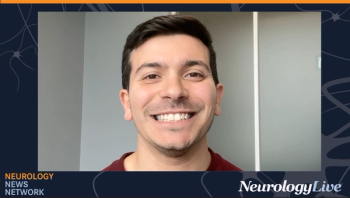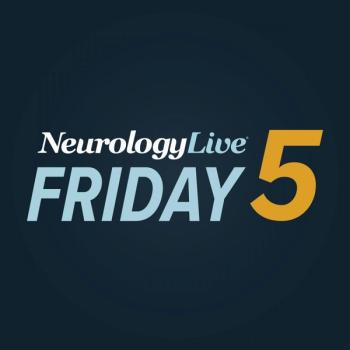
Zervimesine Robustly Slows Geographic Atrophy Lesion Growth in Latest Phase 2 MAGNIFY Data
Key Takeaways
- Zervimesine reduced geographic atrophy lesion growth by 28.6% over 18 months in dry AMD patients compared to placebo.
- The MAGNIFY trial was concluded early to allocate resources to Alzheimer's and dementia with Lewy bodies studies.
The phase 2 MAGNIFY trial demonstrated that zervimesine (CT1812) slowed lesion growth in patients with geographic atrophy secondary to dry AMD, showing a 28.6% reduction over 18 months.
Newly announced findings from the phase 2 MAGNIFY trial (NCT05893537) showed that treatment with investigation zervimesine (Cognition Therapeutics), a small molecule agent, led to slower lesion growth in patients with geographic atrophy (GA) secondary to dry age-related macular degeneration (dry AMD) over an 18-month period.1
In the latest data update, patients on 200 mg of once-daily zervimesine, or CT1812, had 28.6% slower GA lesion growth on average when compared with those on placebo, over the 18-month time frame. More notably, the percent reduction in GA lesion growth continued to improve over time, with 12% reduction at 6 months, 16% reduction at 12 months, and the aforementioned final data readout.
While more data from MAGNIFY are expected to be announced at a later date, the company decided to conclude the study prior to its intended enrollment goal to allow it to focus resources on other ongoing programs in Alzheimer disease and dementia with Lewy bodies. Overall, approximately 100 of the planned 246 participants were enrolled, and among those included, two-third completed 12 months of dosing and one-third completed 18 months of dosing.
"To date, we have observed evidence of robust slowing of disease progression with zervimesine treatment in Phase 2 studies in Alzheimer’s disease and dementia with Lewy bodies," Anthony Caggiano, MD, PhD, chief medical officer and head of R&D at Cognition Therapeutics, said in a statement.1 "These results in dry AMD represent yet another indication in which zervimesine has potential to slow the progression of disease with a once-daily oral pill. Compared to current treatment options, which require regular clinic visits for intravitreal injections, an effective oral treatment that patients can take at home would be truly transformative."
Other safety, demographics, and visual and anatomic outcomes are still being processed, but are anticipated to be released at a later date. In the study, zervimesine-treated patients had 28.2% smaller mean lesion size than those on placebo at the 18-month treatment time point.
"Dry AMD is now the third indication in which we have shown efficacy signals with a once-daily oral drug," Lisa Ricciardi, president and chief executive officer at Cognition, said in a statement.1 "We believe zervimesine has the potential to be used as a monotherapy or in combination with existing medications. This would allow physicians the flexibility to tailor treatment regimens for their patients. Importantly it would also allow patients who are not appropriate for injectables to have access to treatment. With the right partner and development plan, we believe zervimesine could be a treatment breakthrough in these large, underserved diseases."
Zervimesine is currently being tested in other neurodegenerative conditions like AD and DLB, and has shown promising results at the phase 2 level. In the SHIMMER study (NCT05225415) of DLB, the
In this exploratory, double-blind, placebo-controlled study, investigators observed marked reduction in caregiver distress, suggesting a positive impact on the day-to-day lives of patients who received the drug. Participants treated with zervimesine also had a slowing of decline across 3 cognitive measures compared with placebo such as fluctuations in attention, which reduced by 91%.
The therapeutic was also tested in a
Zervimesine showed a nominally significant improvement in global alpha Amplitude Envelope Correlation AEC-c (least square [LS] mean difference, 0.016 [SE, 0.007]; P = .034) and a numerically favorable treatment difference in global relative alpha power (LS mean difference, 0.026 [SE, 0.017]; P = .149). At day 29, mean ADCS-GCI-I scores were similar for both groups (placebo: 4.0 [SD, 0.76], CT1812: 4.0 [SD, 0.73]), with minimal or no change observed in 16 CT1812 patients and 14 of 15 placebo patients. No differences were found between groups on the Amsterdam IADL or NTI Battery.
Another phase 2 study of mild-to-moderate AD, dubbed SHINE (NCT03507790), also assessed the safety, tolerability, exploratory cognitive and functional outcome measures, and exploratory biomarker effects of 2 doses of zervimesine in patients with mild-to-moderate AD. Several analyses were recently presented at the 2025 AD/PD International Conference on Alzheimer’s and Parkinson’s Diseases, including a post-hoc proteomic biomarker analysis of 45 participants using a tandem-mass tag mass spectrometry.
Here, differentially abundant proteins (113 total) were mapped to 44 previously established protein co-expression network modules built from samples from healthy individuals, asymptomatic patients with AD, and those with AD. All told, the analysis corroborated previously identified pharmacodynamic biomarkers of CT1812 pathway engagement and disease modification as well as facilitated identification of novel biomarkers.4 Following these data, Mary Hamby, PhD, vice president of research at Cognition, sat down to explain these findings and how they further support the agent’s development.
REFERENCES
1. Cognition Therapeutics Reports Topline Results Showing Oral Zervimesine (CT1812) Reduced Lesion Growth in Phase 2 Study in Geographic Atrophy. News release. Cognition Therapeutics. May 8, 2025. Accessed May 8, 2025. https://www.globenewswire.com/news-release/2025/05/08/3077141/0/en/Cognition-Therapeutics-Reports-Topline-Results-Showing-Oral-Zervimesine-CT1812-Reduced-Lesion-Growth-in-Phase-2-Study-in-Geographic-Atrophy.html
2. Cognition Therapeutics Announces Positive Results in Phase 2 Study of CT1812 in Dementia with Lewy Bodies. News Release. Cognition Therapeutics. Published December 18, 2024. Accessed May 8, 2025. https://ir.cogrx.com/press_releases/cognition-therapeutics-announces-positive-results-in-phase-2-study-of-ct1812-in-dementia-with-lewy-bodies/
3. Cognition Therapeutics Publishes EEG Findings from Phase 2 SEQUEL Study of CT1812 in Mild-to-Moderate Alzheimer’s Disease. News release. Cognition Therapeutics. August 22, 2024. May 8, 2025. https://ir.cogrx.com/news-releases/news-release-details/cognition-therapeutics-publishes-eeg-findings-phase-2-sequel
4. Lizama BN, Pandey K, Duong D, et al. CSF proteomic biomarker analysis from phase 2 study SHINE identified effects of S2R modulator Ct1812 in Alzheimer’s Disease. Presented at: 2025 AD/PD conference; April 1-5; Vienna, Austria. ABSTRACT 02-172
Newsletter
Keep your finger on the pulse of neurology—subscribe to NeurologyLive for expert interviews, new data, and breakthrough treatment updates.



































